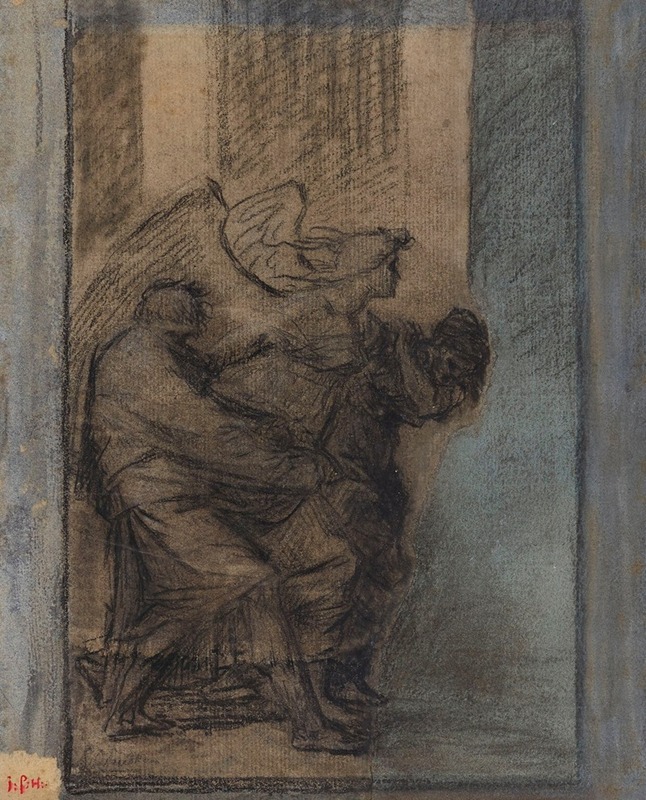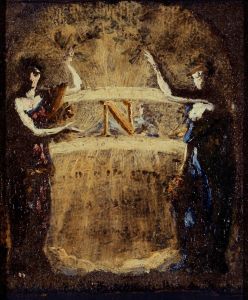
Némésis
A hand-painted replica of Pierre-Paul Prud'hon’s masterpiece Némésis, meticulously crafted by professional artists to capture the true essence of the original. Each piece is created with museum-quality canvas and rare mineral pigments, carefully painted by experienced artists with delicate brushstrokes and rich, layered colors to perfectly recreate the texture of the original artwork. Unlike machine-printed reproductions, this hand-painted version brings the painting to life, infused with the artist’s emotions and skill in every stroke. Whether for personal collection or home decoration, it instantly elevates the artistic atmosphere of any space.
Pierre-Paul Prud'hon was a prominent French painter known for his unique style that blended elements of Neoclassicism and Romanticism. One of his notable works is "Némésis," a painting that captures the essence of the Greek goddess of retribution and justice. Prud'hon, who lived from 1758 to 1823, was highly regarded for his ability to convey emotion and depth through his artwork, and "Némésis" is a testament to his skill and artistic vision.
"Némésis" was created during a period when Prud'hon was gaining recognition for his distinctive approach to painting. Unlike many of his contemporaries who adhered strictly to the Neoclassical style, Prud'hon infused his works with a sense of softness and emotional depth, often drawing comparisons to the Romantic movement. This blend of styles is evident in "Némésis," where the goddess is depicted with a sense of grace and power, embodying both beauty and strength.
The painting portrays Némésis, the goddess who personifies retribution against those who succumb to hubris. In Greek mythology, she is known for maintaining the balance of fortune and ensuring that excessive pride is punished. Prud'hon's depiction of Némésis captures her dual nature as both a benevolent and vengeful figure. The artwork is characterized by its delicate use of light and shadow, which highlights the goddess's serene yet commanding presence.
Prud'hon's technique in "Némésis" reflects his mastery of chiaroscuro, a method that uses strong contrasts between light and dark to achieve a sense of volume and three-dimensionality. This technique allows Prud'hon to create a lifelike representation of the goddess, emphasizing her ethereal beauty and the moral weight she carries. The subtle gradations of tone in the painting contribute to its overall sense of harmony and balance, qualities that are central to Prud'hon's artistic philosophy.
The painting is also notable for its composition, which draws the viewer's eye to the central figure of Némésis. Her posture and expression convey a sense of calm authority, underscoring her role as an arbiter of justice. Prud'hon's attention to detail is evident in the intricate rendering of her attire and the surrounding elements, which add depth and context to the scene.
"Némésis" is a reflection of Prud'hon's broader body of work, which often explored themes of justice, morality, and the human condition. His ability to convey complex emotions and ideas through his art has earned him a lasting place in the history of French painting. Today, "Némésis" is appreciated not only for its aesthetic qualities but also for its insight into the cultural and philosophical currents of Prud'hon's time.
While specific details about the painting's commission or its initial reception are not well-documented, "Némésis" remains an important example of Prud'hon's contribution to the art world. It exemplifies his skill in blending classical themes with a romantic sensibility, creating works that resonate with viewers on multiple levels. Through "Némésis," Prud'hon invites us to contemplate the delicate balance between justice and retribution, a theme that continues to be relevant in contemporary discourse.

















